-
Posts
2,739 -
Joined
-
Last visited
Content Type
Profiles
Forums
Gallery
Events
Posts posted by Gregory
-
-
-
Looking forward to your build..
You have several months to ask questions and prepare.. Don't wait till the build starts..
I wish more members would ask questions like you have during your Bounty build..
-
-
Any plans for your next ship?
-
-
On 3/15/2020 at 10:02 AM, wefalck said:
The problem is that the cutting software does not allow to superimpose images,
Have you seen LightBurn
It is a very robust cutting program with layer support. it supports many different controller boards.
It has limited editing features, but You can import multiple images and align them very precisely on the cutting grid.
It also has a very good tracing tool for defining cutting outlines of objects that are not vectorized.
-
Have you tried contacting the SS United States Conservancy?
-
I have had both of the kits Chris mentions in my possession, but didn't manage to build either one, so I don't know how valuable my opinion will be.
You can see looking from the builds that the BJ kit is POF and offers more options for finishing such as showing exposed framing.
The main parts are CNC and require a lot of finishing. A lot of detail requires fabrication, and most of the wood is bass, so if one does not want to do a lot of painting, they might choose to acquire some. after market wood. The instructions and plans are first rate.
I decided the kit was above my skill level at the time, and sold it.
The Mamoli/Dusek kit is fairly typical European, double planked, POB.
The plans are good and the instructions minimal.
The lines and deck layout match real well with several different drawings I have seen.
There's a companion way added that I haven't seen on any of my other references , so let me know if you are interested and want more detail.
It has a lot of useable metal fittings that clean up well. There use to be a sewn sail set available that didn't look too bad.
I don't know if you are familiar with the Mamoli " coppering " approach, but they include little green wood tiles as a solution. If someone were interested in producing a model with a " folk art " look, they would be worth considering. Otherwise it should be easy to use aftermarket copper tape or tiles if you want to copper.
Life got in the way of me proceeding with the kit, and my infatuation with America waned, but it is something I would consider again after I get some other projects out of the way. I would choose Mamoli over BJ, because of building method.
I take it you have looked at the Mamoli builds here at MSW.
I know the new Dusek released kits have laser cut bulkheads so it may require less fiddling now.
Let me know if I can help with any other info.
P.S.
I just looked at the new Mamoli/Dusek kit at ModelExpo , and they have added some PE parts and a roll of copper tape.
Should make for a better build.
-
-
A retired LT ?
- JRB, Keith Black and thibaultron
-
 3
3
-
I think I need a picture..
-
I'll be the first to say Chuck's method is far superior to mine because it makes the planks lay flat on the bulkheads..
I only offered my flat bend as an example that does not benefit from extended soaking, steaming or boiling which is sometimes offered as a workable method.
I might use it for a couple of planks high up on the bow, but once the form requires bending in 2 dimensions, Chuck's method rules the day..
-
Chuck sorta got on to me for using a power tool..😁
- Keith Black and mtaylor
-
 2
2
-
-
Here is a good example from JesseLe
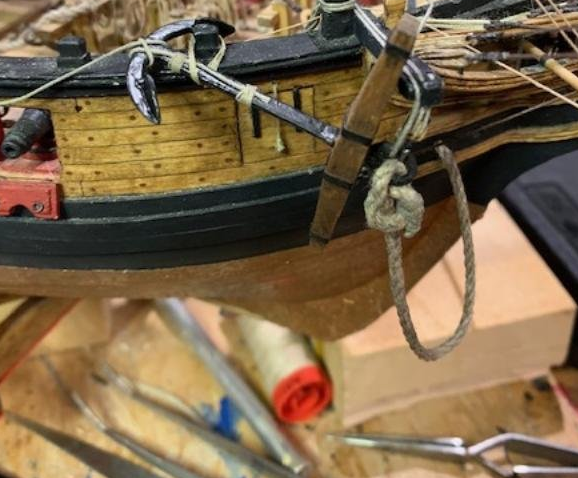
- thibaultron, AJohnson and mtaylor
-
 3
3
-
On 5/5/2021 at 3:39 PM, AJohnson said:
I have seen on other builds a few variations on where the cable enters the hull for stowage:- in the main hatch, with variation of at the leading or trailing ends, or down some holes in between the main hatch and forward hatch, or the forward hatch even....
The plans you show are severely lacking in the amount of anchor cable required, and it would not be coiled on the weather deck as shown.. It is stored below the main deck. How it gets there will vary.. My Bounty references do not show it, but at the least it would pass down through the hatch near the windless, or further back near the capstan...
-
The extra rope will not be on the gun deck.. It will always be below .. No coil..
- mtaylor and thibaultron
-
 2
2
-
Not seeing how you have the rope laying across the deck..
According to the instructions, the rope should pass down into the lower decks through a hole in the gratings..
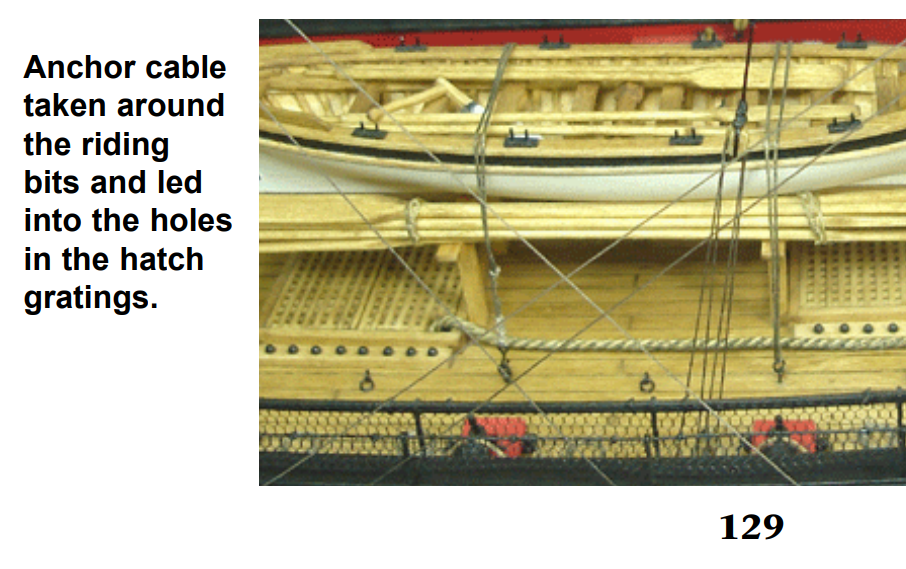
Modeling the rope being hauled in by the capstan would take a different approach..
- mtaylor and thibaultron
-
 2
2
-
The extra rope would be below deck, so all the extra rope you show should be saved for another project...
- mtaylor and thibaultron
-
 2
2
-
Who's going to know?
But now that you mentioned it, we'll be watching... 😁
- thibaultron and mtaylor
-
 2
2
-
Looks like a very nice start..
- Keith Black and mtaylor
-
 2
2
-
What I want to know, is why Jack hasn't been commissioned to make some boxwood figures at $100 a pop?😁
-
Getting back to you..
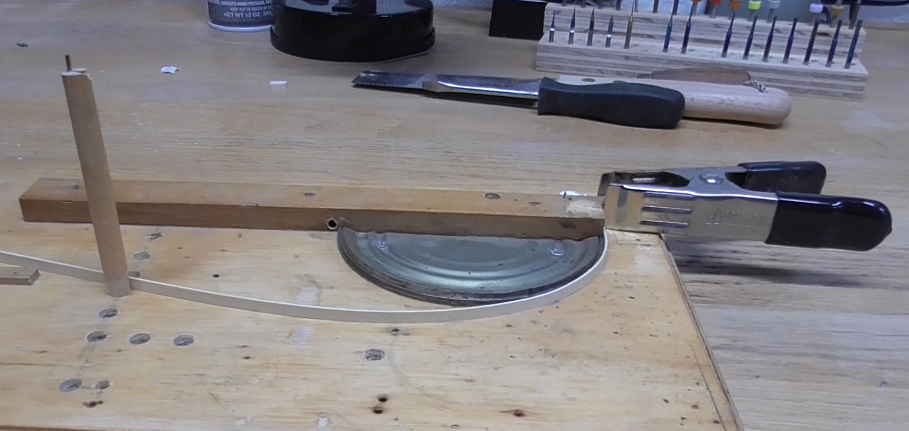
I've modified my jig a little since the pictures i posted earlier.. Still works the same way.
First I tried some 1mm Alaskan Yellow Cedar. You can almost tie this stuff in a knot without it splintering or breaking.
One piece was dry from my stash, and I soaked another piece in plain water for about 10 minutes. I think 2 or three minutes would have been plenty, but I was doing other stuff.
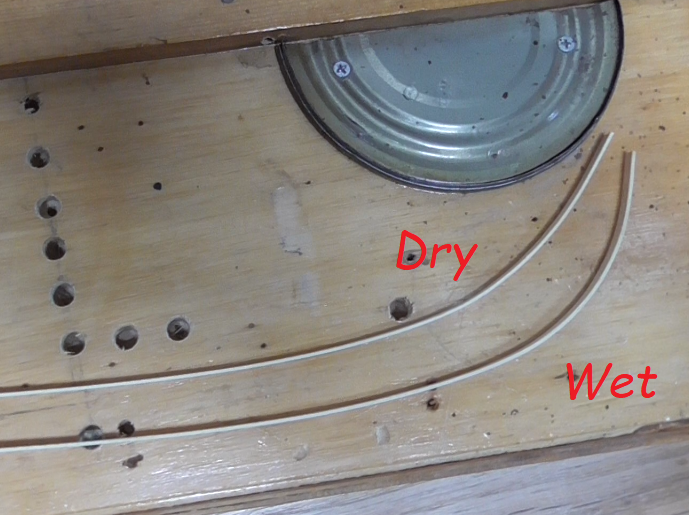
The wet version clearly held the bend better.
The blow dryer ran for 5 minutes, and I let the pieces sit for 10 minutes before removing from the jig.
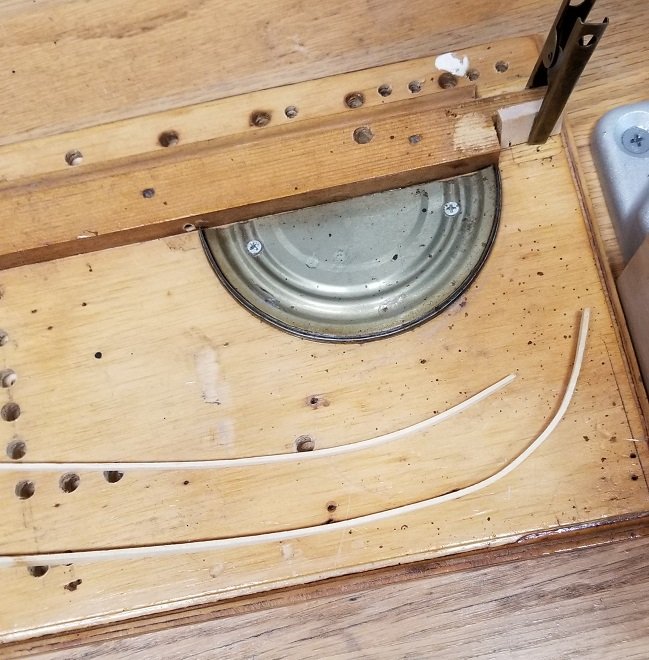
Here is the typical wood that comes in kits for 1st planking.. Not sure of species.. Lime, ramin, bass?
It is 1.5 mm. This particular strip did not seem prone to splintering..
I don't even know how to identify ramin, but I have some bass billets that I could cut strips from for a more definitive experiment.
Dry is at the top and we can see the wet piece has retained the bend much better.
There could be a lot of variables of heating method, application and cooling time.
Depending on the desired end result, I think some of the more involved methods of steaming , boiling, microwaving or whatever , might be a waste of time..
Let me know if you have more questions or observations.
-
2 hours ago, Peanut6 said:
Can you put a dry (unsoaked) plank in your plank bending jig as shown in the second picture?
I can. I will even run a test to check the difference and report back.. As I said, the water helps transfer the heat.. The hair drier doesn't make steam, but it dries any moisture pretty fast.
The amount of bending without snapping or splintering varies with the type and thickness of the wood and the soaking doesn't affect that much, if at all.
I appreciate the interest..

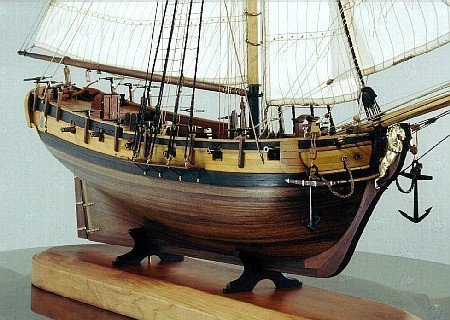

HMS Bounty by DaveBaxt - FINISHED - Amati - 1:60
in - Kit build logs for subjects built from 1751 - 1800
Posted
I will be watching.. I Don't have any experience with Caldercraft, but I think they are a cut above some kits i have worked on.
I like the look of walnut, but you will find it's detractors among some ' purists '..
I wonder how it responds to " Chuck's edge bending method " ?